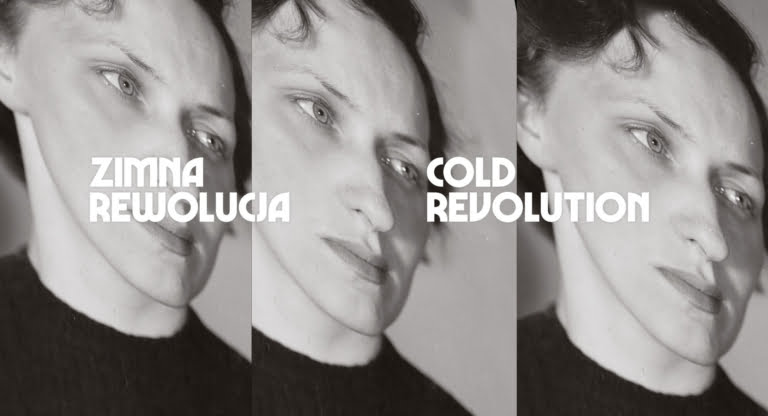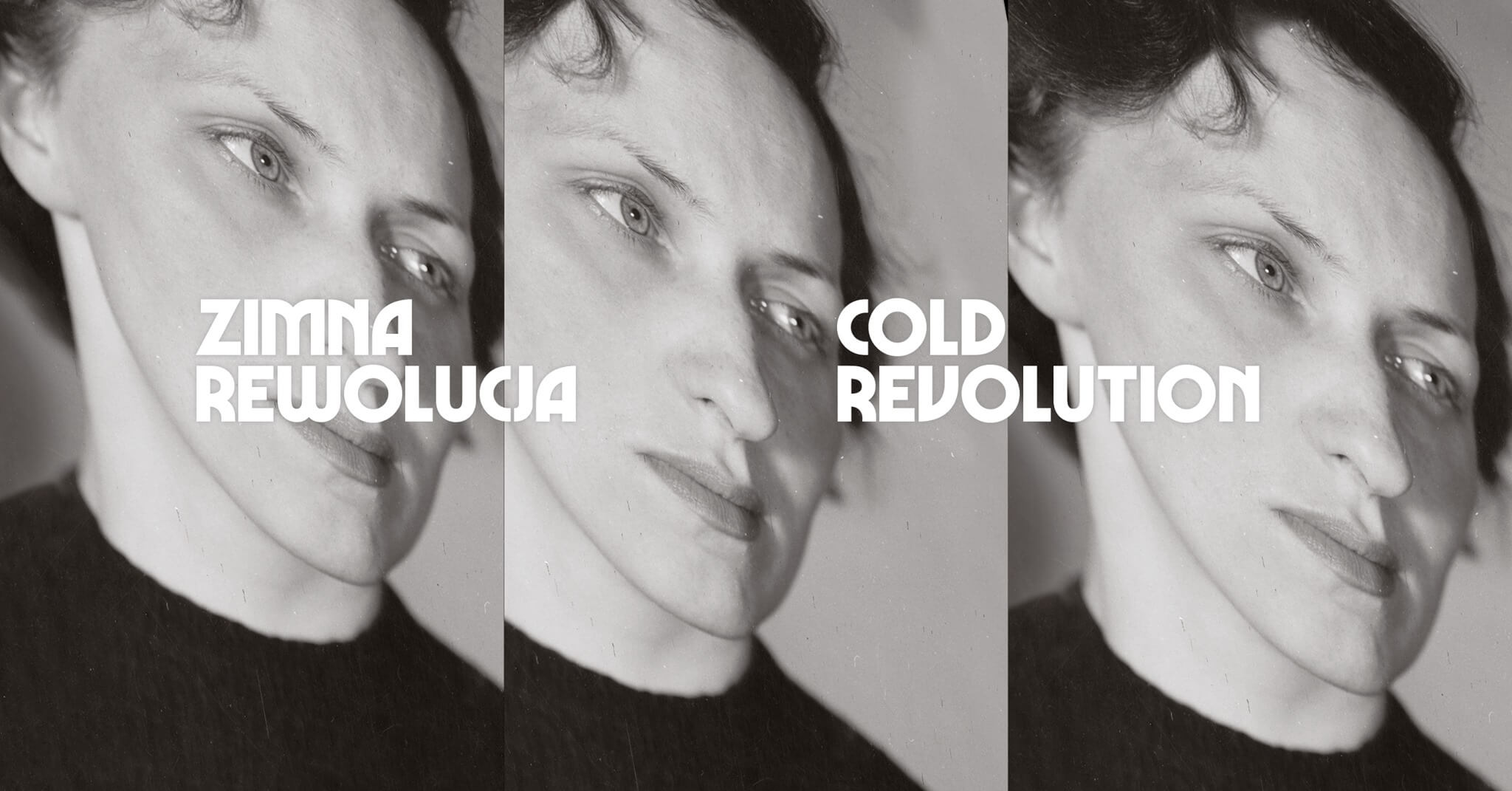Zimna rewolucja | Cold revolution
„Zimna rewolucja. Społeczeństwa Europy Środkowo-Wschodniej wobec socrealizmu, 1948–1959″
otwarcie wystawy: 27.05.2021
daty trwania wystawy: 27.05 – 19.09.2021
kuratorzy: Joanna Kordjak, Jérôme Bazin
współpraca: Michał Kubiak
partnerzy wystawy: Muzeum Narodowe i Galeria Narodowa w Budapeszcie; Narodowe Archiwum Filmowe, Praga; Słowacka Galeria Narodowa, Bratysława; Université Paris-Est Créteil
współpraca: Rumuński Instytut Kultury, Węgierski Instytut Kultury, Instytut Słowacki w Warszawie, Bułgarski Instytut Kultury, Czeskie Centrum, Instytut Adama Mickiewicza
Projekt jest współfinansowany przez rządy Czech, Węgier, Polski i Słowacji z Grantu Wyszehradzkiego w ramach Międzynarodowego Funduszu Wyszehradzkiego. Celem funduszu jest rozwój idei zrównoważonej współpracy regionalnej w Europie Środkowej.
[for English scroll down]
W „zimnym” klimacie lat 50. – narastających napięć międzynarodowych i umacniania się dyktatur komunistycznych – w krajach Europy Środkowo-Wschodniej dokonała się rewolucja społeczna. Była to rewolucja w znaczeniu głębokich przeobrażeń prowadzących do ustanowienia nowych hierarchii społecznych i urzeczywistnienia „dyktatury proletariatu”, ściśle powiązanych z gwałtowną industrializacją i urbanizacją w tej części Europy.
Kuratorzy wystawy podejmują krytyczną refleksję na temat zachodzących wówczas przemian, obrazując ich skalę i dynamikę za pomocą materiału wizualnego z dziedziny malarstwa, fotografii, filmu, wzornictwa i architektury. Obejmuje on ponad 400 prac z sześciu krajów dawnego bloku wschodniego: Polski, Czechosłowacji, NRD, Bułgarii, Rumunii i Węgier.
Sztukę tamtego okresu sprowadza się na ogół do przepojonych wiarą w świetlaną przyszłość wizerunków radosnych robotników czy heroicznych przedstawień ich pracy, to jednak tylko część produkcji wizualnej socrealizmu. Aby nakreślić jej pełniejszy, bardziej zniuansowany obraz, kuratorzy sięgają po dzieła odbiegające od tych stereotypowych wyobrażeń, często dalekie od propagandowego entuzjazmu, niekiedy naznaczone melancholią czy niepokojem. Podejmują polemikę z utrwalonym przekonaniem, że socrealizm był odciętym od rzeczywistości społecznej „spektaklem, który kreował nową rzeczywistość” (Evgeny Dobrenko). Spośród licznych przedstawień wybierają takie, które dotychczas pozostawały w cieniu, a dziś mogą rzucić nowe światło na surowe realia tamtej epoki. Skupiają uwagę na roli, jaką w tworzeniu socjalistycznego ładu społecznego i dowartościowywaniu nowych elit odgrywały kultura i sztuka. Świadomi rozbieżności między prezentowanymi obrazami a rzeczywistą sytuacją aktorów społecznych śledzą losy robotników (migracje ze wsi do miasta, zdobywanie nowej pozycji zawodowej, określanie na nowo własnej tożsamości) i próbują za pomocą wybranych dzieł uchwycić towarzyszące im emocje: entuzjazm, niepokoje i rozczarowania. Wystawa pokazuje zmieniające się oblicze klasy robotniczej: konflikty i napięcia w obrębie tej niejednorodnej grupy, a także jej niejednoznaczny stosunek do władzy. Jednym z założeń projektu jest także włączenie socrealizmu (nazywanego wielkim Innym XX wieku) w procesy transformacji sztuki XX stulecia i ukazanie go w jego zaskakującej różnorodności i wieloznaczności.
Tytuł „Zimna rewolucja” odnosi się oczywiście do kontekstu politycznego zimnej wojny (choć w tamtych czasach pojęcie to nie było w użyciu językach krajów Europy Środkowo-Wschodniej), a przede wszystkim do klimatu zamrożenia politycznego epoki stalinizmu: aktów arbitralnej przemocy i strachu. Określenie „zimny/a” prowokuje także pytania o stopień zaangażowania całego społeczeństwa w rewolucję lat 50. i temperaturę rewolucyjnego zapału, z jakim przystępowano do budowania nowego świata.
Na wystawie znajdą się prace m.in. takich artystów jak Aurél Bernáth, Walerian Borowczyk, Hans Grundig, Renato Guttuso, Wojciech Fangor, Emil Filla, Arno Fischer, Jiří Kroha, Jan Lenica, Max Lingner, János Mattis-Teutsch, Andrzej Munk, Evelyn Richter, Willi Sitte, Henryk Stażewski, Władysław Strzemiński, Alina Szapocznikow, Jiří Trnka, Werner Tübke, Kurt Weiler, Andrzej Wróblewski, Karel Zeman
Wystawie towarzyszy publikacja:
Cold Revolution. Central and Eastern European Societies in Times of Socialist Realism, 1948–1959, red. Jérôme Bazin, Joanna Kordjak, Mousse Publishing, Adam Mickiewicz Institute, Zachęta – National Gallery of Art, Warsaw–Milan 2020
Projekt graficzny Jakuba de Barbaro z wykorzystaniem fotografii Zbigniewa Dłubaka, „Portret”, ok. 1954, fotografia, (c) Armelle Dłubak/Fundacja Archeologia Fotografii
__________
‘Cold revolution. Central and Eastern European Societies in Times of Socialist Realism’, 1948–1959′
the opening of the exhibition: 27.05.2021
duration of the exhibition: 27.05 – 19.09.2021
curators: Joanna Kordjak, Jérôme Bazin
cooperation: Michał Kubiak
exhibition partners: National Museum and National Gallery in Budapest; National Film Archive, Prague; Slovak National Gallery, Bratislava; Université Paris-Est Créteil
cooperation: Romanian Cultural Institute Warsaw, Hungarian Cultural Institute, Slovak Institute in Warsaw, Bulgarian Institute for Culture in Warsaw, Czech Centre, Adam Mickiewicz Institute
The project is co-financed by the Governments of Czechia, Hungary, Poland and Slovakia through Visegrad Grants from International Visegrad Fund. The mission of the fund is to advance ideas for sustainable regional cooperation in Central Europe.
In the ‘cold’ climate of the 1950s — growing international tensions and the strengthening of communist dictatorships — a social revolution took place in Central and Eastern European countries. It was a revolution in the sense of profound transformations leading to the establishment of new social hierarchies and the bringing about of a ‘dictatorship of the proletariat’, strictly tied to the rapid industrialisation and urbanisation of this part of Europe.
The curators of the exhibition undertake a critical reflection on the changes taking place at that time, illustrating their scale and dynamics using visual material from the fields of painting, photography, film, design and architecture. It includes over 400 works from six countries of the former Eastern Bloc: Poland, Czechoslovakia, East Germany, Bulgaria, Romania and Hungary.
The art of that period is generally reduced to images of cheerful workers or heroic representations of their work, imbued with faith in a bright future, but this is only part of the visual production of socialist realism. In order to draw a fuller, more nuanced picture of it, the curators reach for works that deviate from these stereotypical notions, often far from propaganda enthusiasm, sometimes marked by melancholy or anxiety. They take up a polemic with the long-established conviction that socialist realism was a ‘spectacle that produced a new reality’ (Evgeny Dobrenko), detached from social reality. From among the numerous representations, they choose those that have previously remained in the shadows, and which today can shed new light on the cold, harsh realities of that era. They focus on the role that culture and art played in the creation of the socialist social order and valuing the new elites. Aware of the discrepancies between the presented images and the actual situation of social actors, they follow the fate of the workers (migrations from the countryside to the city, gaining a new professional position, redefining one’s own identity) and with the selected works try to capture the emotions accompanying them: enthusiasm, anxiety and disappointment. The exhibition shows the changing face of the working class: conflicts and tensions within this heterogeneous group, as well as its ambiguous attitude towards the authorities. One of the project’s assumptions is to also include Socialist Realism (also called the ‘great Other’ of the 20th century) in the transformation processes of 20th-century art and to show it in its surprising diversity and ambiguity.
The title ‘Cold revolution’ obviously refers to the political context of the Cold War (although at the time the term was not used in the languages of the countries of Central and Eastern Europe) and, above all, to the climate of the political freeze of the Stalinist era: acts of arbitrary violence and fear. The term ‘cold’ raises also question of the degree of involvement of the whole society in the revolution of the 1950s and the temperature of revolutionary zeal with which the building of the new world began.
The exhibition will include works by such artists as Aurél Bernáth, Walerian Borowczyk, Hans Grundig, Renato Guttuso, Wojciech Fangor, Emil Filla, Arno Fischer, Jiří Kroha, Jan Lenica, Max Lingner, János Mattis-Teutsch, Andrzej Munk, Evelyn Richter, Willi Sitte, Henryk Stażewski, Władysław Strzemiński, Alina Szapocznikow, Jiří Trnka, Werner Tübke, Kurt Weiler, Andrzej Wróblewski and Karel Zeman
The exhibition is accompanied by the publication: Cold Revolution. Central and Eastern European Societies in Times of Socialist Realism, 1948–1959, ed. Jérôme Bazin, Joanna Kordjak, Warsaw and Milan: Mousse Publishing, Adam Mickiewicz Institute, Zachęta — National Gallery of Art, 2020
Graphic design by Jakub de Barbaro using photograph by Zbigniew Dłubak, ‘Portrait’, ca. 1954, photograph, (c) Armelle Dłubak/Archaeology of Photography Foundation
Informacje pochodzą ze strony:
https://www.facebook.com/events/4057402850982460/


 Dodaj wydarzenie
Dodaj wydarzenie Kalendarz
Kalendarz Moje konto
Moje konto


